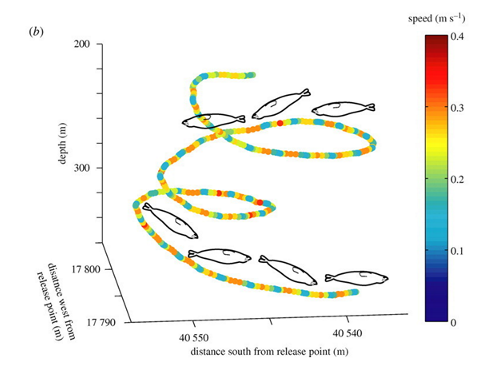Lifereborn - The Life Weavers Retreat
More Posts from Lifereborn and Others
Did you know! Elephant Seals are negatively buoyant, which means that they sink naturally in the water, but have to use energy to swim back up. This means that they are able to save 18-24% of their energy on a dive compared to having to actively swim down. This descent is so effective that they can actually fall asleep on the way down! They are also officially described as "falling like a leaf". Have a look at the cool diagram below that I pulled from one of my university lectures that I went to a few years ago.

ID: a diagram of the descent pattern of an elephant seal. There are three axes (depth, distance west and distance south) showing the distances from the release point in metres. There is a coloured scale showing the speed of the descent, and a spiral made up of coloured dots that show the route.

Plant Immune System Part 3
The plant immune system is the topic of my PhD thesis, which I'm currently writing following several years of lab-based research as a PhD student at Imperial College London under the supervision of Professor Colin Turnbull.
Here's an introduction to my research, which focused on how certain plants defend themselves against aphids.
Aphids are an important insect pest that threaten agriculture worldwide. As we learned in the previous post, plant resistance (R) genes control resistance to specific pests and pathogens through interaction with effectors from the invaders. Since examples of R gene-dependent aphid resistance have been documented in different plant species, aphid-specific R genes may enable the development of resistant crops.
In the model plant Medicago truncatula, there are some varieties that are resistant to aphids and other varieties that are susceptible to Pea Aphids (Acyrthosiphon pisum). Whether the plant is resistant also depends on the variety of aphid. In my project, the A17 plant is resistant to PS01 aphids but not to N116 aphids, while the DZA plant is susceptible to both aphid varieties.
What is the key difference in the resistant versus susceptible plants? Resistant A17 plants have a portion of their genome “Resistance to Acyrthosiphon pisum 1” (RAP1) which determines resistance to PS01 aphids, but the genes controlling the defence response and physiological defence mechanisms remain unknown. Two candidate R genes located in RAP1, designated “RAP1A” and “RAP1B”, may control resistance.
My main objective in my PhD project has been to determine whether RAP1A and RAP1B control aphid resistance, and to investigate the RAP1-mediated defence response. I look forward to sharing the findings in publications and in talks next year!
Image credit: Original diagram by Katia Hougaard with images from the Turnbull Lab.
#katia_plantscientist#science#biology#research#plants#botany#plantbiology#phdproject#plantbiology#plantscience#sciencecommunication#diagrams#phd#imperialcollegelondon#phdthesis#medicago#aphid#plantimmunesystem#pestsandpathogens#plantpathology#womeninscience#plantbiologist

New Toy
(repost because I wanted to fix something)

Luthadel by Ricky Ho

I am obsessed with this whole aesthetic thing people have going with college studying, most especially with STEM. It's so foreign to me because I don't know about anyone else but when I studied for exams my work space looked like someone had ripped apart a book and thrown pages in all directions.
-
 hilyasp liked this · 1 year ago
hilyasp liked this · 1 year ago -
 lifereborn reblogged this · 1 year ago
lifereborn reblogged this · 1 year ago

Scientist, scholar, hapless train wreck all wrapped into one neurotic package.
71 posts



